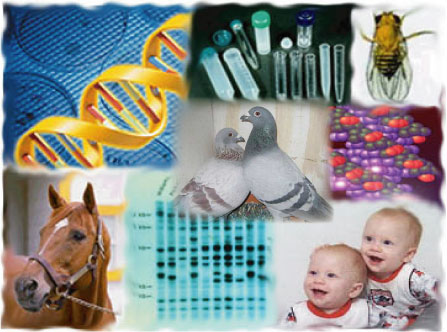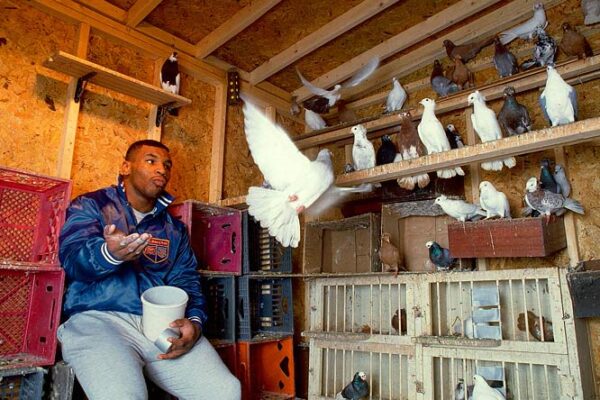Factoring Genetics into Racing Pigeon Breeding
 Learning and understanding the genetics of racing pigeons is crucial to the successful breeding of the birds. There are genetic traits that you know desire and need to introduce to the gene pool of your loft. You need to know just what you want.
Learning and understanding the genetics of racing pigeons is crucial to the successful breeding of the birds. There are genetic traits that you know desire and need to introduce to the gene pool of your loft. You need to know just what you want.
Another important area is in linebreeding. Linebreeding is a powerful way to intensify the genetic traits of your loft. If you want success in improving your pigeon family, it is best to study both genetics and linebreeding and apply this knowledge to your breeding program.
Linebreeding vs. Random Inbreeding
Nothing will deteriorate a loft family faster than random inbreeding. The cardinal rule is to never breed pigeons from more than two generations unless they have been tested thoroughly. However, with inbreeding, pairing birds to bring out a common inheritance will only improve the genetic pool of your loft.
This goes back to the founding pigeon of the great families of pigeons. These founding pigeons possess special gene combinations which are then passed on to their babies. Pairing the right birds in linebreeding will very often result in a resurrection of a high percentage of the original gene combinations.
Breeding Coefficient
Aim for a breeding coefficient between 28 -37% when pairing two birds that are related. This appears to be the ideal for producing not only a very high number of good breeders but also a high number of above average quality racing pigeons. It is through racing that breeders are discovered.
Exceptional breeders are often found in good or even just adequate racers with a breeding coefficient of 28 to 35 or 37%. Over 20 years of study has led to the conclusion that finding the right coefficient and breeding to that coefficient (related birds) is certainly the way of succeeding from one generation of birds to subsequent generations in the breeding loft.
Genetic Purity
Seeking to breed only genetically ‘pure’ birds is near futile from a scientific point of view. To achieve genetic purity, you would have to start with inbred stock and then breed brother to sister for five generations or more. However, there is some merit to the belief that better results are achieved by working only with linebred or inbred stock. But, it really comes down to the fact that the combination of the individual bird with the partner bird is what gives you the racing or breeding coefficients you’re seeking.
We will continue this discussion of factoring genetics into your breeding by using the story of the Meulemans pigeons as examples of the importance of pairing in linebreeding.
Factoring Genetics Example – The Meulemans Pigeons









Hello all,imy english not good excusme,my questions:1_ Which pigeons are the ancestors of today’s racetrack? 2_what order is this made? French pigeon passenger+ dragon+ rock+ hommer+balloon pigeon what order?thank you very much.
I would sincerely hope my racing competition would adopt the concept of this author’s article. It would make my racing that much easier !
I am a new fancier and have managed to arrange seven birds. I need to know how to pair them and how to start the Racing game. Since I have a great lover of high flying pigeons and have 15 years experience. Kindly help to get start with this amazing sport.
Genetics……My though on the subject is…..dont…unless you know what you are doing….Inbreeding reguires more than just putting 2 birds together and then mating related birds to produce a family you think will win for you. you have to closely monitor the offspring. and make sure the prodague you have produced carry the traits in the genes , are the traits you like as color or size. That could be good if that is what you want. Heres an exemple. Take a blue hen and mate it to white cock. What you will get is 1 bird with blue and white, and the other will be blue. If you were looking for white, well you almost got. Now here is where your inbreeding starts. Cross the young back to their parents. In these matings your going to get blues , blue splashes, and may be a white. Cull all the blue birds. Remember you want white. Mate the remaining birds that show white back to the white parent from the first mating, and the white bird that you got for the f1 mating. From these matings you will get white, blue splash, showing alot of white, blue splash, showing little white. and blue. Cull all the blues, and the blue splash that show little white.Now mate all the white and the white splash. back to the white bird from the first mating, and white splash showing little blue back to young from the f1 mating. Now remember this isnt done over night as it can take a couple of years. But after this mating….Cull everythings that is still coming out blue. But now keep everything that is white and the white that have little blue. See where we are going. Soon we are going to have that white team of birds we were working for. All from 2 birds. Simple inbreeding. Remember that it also takes a lot of young birds from all your matings to get to all white. But this has become your white team. Now you can mate all you whites and white splash with little blue together. Now your inbreeding. I not saying that all the young now are going to be white from now on but white will be the color of the day. I not saying that haveing a winning family of birds will be this easy. As winning teams arent made over nite as hard as you try, there can only be one winner..And not all birds will be in the top 10%. But if your birds come home and they are the size color etc. that you want. Look for a blood line that has the traits that you like and then something a little better, uses that bird. Dont get in a hurry to get rid of all other birds. This 1 bird may be all you need. Just remember, try to keep to what you want. To much of a change is a no no. Remember to cull, stay close to your blood line. If the new birds is a good one. Soon all your birds will carry the gene. Plus you ll still have the traits that you started with, with impovements. You dont have to be a rocket scientist to raise pigeons, but you do need to be patient. Rome wasnt biult in a day and your not going to have that ace pigeon today but with patiences, you have it tomorrow. Remember they are your baby….keep them flying.
Years ago I was a subscriber….
…and your loyalty is certainly appreciated, Michel! 🙂
Thanks for still reading the blog!